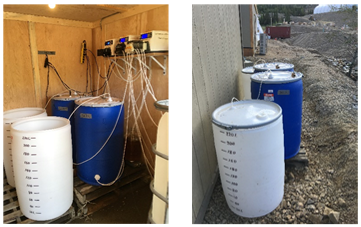
As the exploration and production phases of gold mining operations in the Yukon Territory increase, there is substantial emphasis being placed on the development of remediation technologies to treat mine-impacted water (MIW) during closure and post-closure phases. The mining industry, as well as environmental protection agencies, specific departments within the government and First Nations, have been interested in the research and development of remediation methods to treat heavy metals such as selenium (Se), as well as metalloids such as antimony (Sb), and arsenic (As),all of which are commonly found in wastewaters of Yukon mines. Of particular interest to all stakeholders, is the development of passive or semi passive treatment technologies and bioremediation techniques, which make use of bacteria endemic to the Yukon Territory for the purpose of removing harmful concentrations of these contaminants. In addition to focusing on bioremediation, an emphasis on passive adaptations to these techniques has been highly sought after for its promise of reduced human intervention, and as a result, reduced costs.